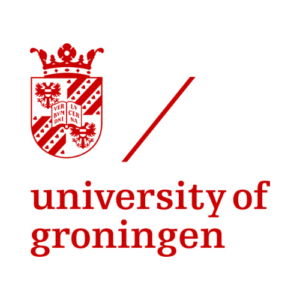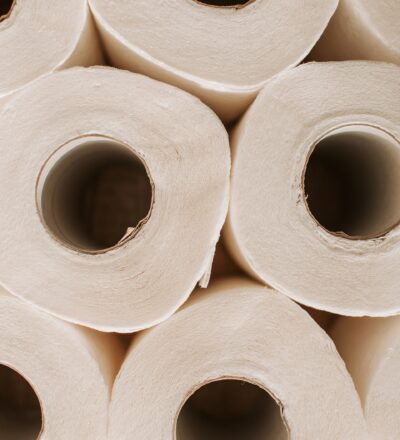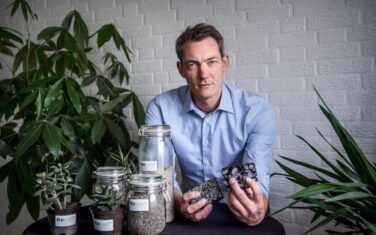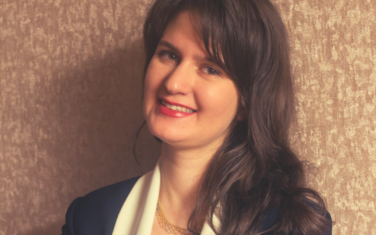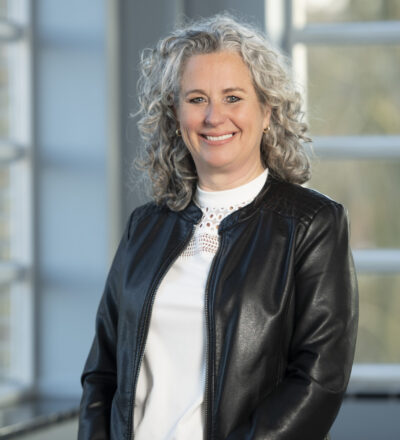Cell-U-Value developed and utilized the capabilities of tertiary cellulose as a feedstock for biobased and sustainable chemicals to its fullest potential. It also tackled and overcame the challenges coinciding with these processes.
Chemical industries are in need of alternatives for fossil resources. Biomass is the only available alternative for more complex molecules and can be derived from waste and other residual streams which are not in conflict with food.
Developing a functional production process for the conversion of tertiary cellulose to glucose
Based on the low cost, its high abundance in waste and its readily available cellulose chains, the use of tertiary cellulose as a feedstock for chemicals is an attractive opportunity. Additionally, the value of this concept reaches even further, since a (temporary) carbon sink is created when waste is used as a resource for new products instead of energy.
The goal of the Cell-U-Value project was to develop a functional production process for the conversion of tertiary cellulose to glucose. A challenge in reaching that goal, was to optimize the conversion of tertiary cellulose to market quality glucose via hydrolysis in an economical way. A second challenge was the target to converse glucose into acetic acid.
For this project to succeed, the core partners enabled the value chain by bringing together supply, demand and (knowledge on) conversion technology processes and disseminated the knowledge broadly.
Activities and Results
In the different work packages the partners jointly worked on the conversion from cellulose into bio-based and sustainable chemicals. This took place by means of hydrolysis and fermentation integrated with reactive extraction. The focus was on lab scale conversion technology and later, a prototype has been made to get clarity on the functional process of production of 10 ton of bio-based fine chemicals made from cellulose. The results of the work that was executed are listed below.
Lab scale conversion of tertiary cellulose to biobased chemicals|
The enzymatic and chemical hydrolysis of tertiary cellulose to glucose have been compared. The concentration of the catalyst (HCl), the temperature and the reaction time have been determined for the chemical hydrolyses. The optimal solids dosage, enzyme concentration and reaction time have been determined for the enzymatic hydrolysis. A first techno-economic analysis of both processes concluded that the enzymatic hydrolysis has a higher yield and fewer by-products, the enzymes would have to be recycled to get a good cost price for the glucose.
Prototype scale production of glucose from tertiary cellulose
The prototype has been designed and built. Several experiments have been carried out to select the right equipment. The hydrolyses were carried out on a 10 tonne per year scale, with the pH and temperature being monitored and logged. Several batches were performed to achieve a good conversion. Different enzyme concentrations, substrate dosages and post-processing steps have been investigated to achieve the most economical and ecological value chain.
Value chain: non-technical implementation conditions
Insight has been gained into the value chain through the market and customers of Bio-MCA. The LCA has shown that enzymatic hydrolysis has a lower CO2 footprint than chemical hydrolysis. There are no regulatory subsidies in the legal framework for chemical markets such as acetic acid, but these are mainly aimed at the fuel market. Limited development is expected in the coming years as the regulations are still being developed.
Follow-up projects
The Recell Chem technology developed in the Cell-U-Value project will be further optimized in various follow-up projects.
- The downstream process is further optimized and scaled up in the DISCO project DISCO: Downstream ISolation of high-value COmponents (ispt.eu).
- New innovative processes are being looked at to make the downstream process even more efficient and sustainable in the future in the ReCoVR project. ReCoVR: Recovery and Circularity of Valuable Resources (ispt.eu).
- The entire Recell Chem process is scaled up from the pilot phase to the demo phase in the CellPro Chem project.
- Broader tertiary cellulose input flows are also being examined and the use of these flows is further scaled up in the ReBBloCS project. ReBBloCS: Renewable Building Blocks from waste (ispt.eu)
Also interesting to read
- Wateralliance.nl; “Cell-U-Value: groene chemische bouwstenen uit cellulose-afval”, March 2019
- Processcontrol.nl; “Cell-U-Value project: van celluloseafval naar groene chemische bouwstenen”, March 2019
- Bioplasticsmagazine.com; “paper waste building block for sustainable chemicals”, March 2019
- Petrochem.nl; “Chemische bouwstenen uit papierafval”, March 2019
- NOM; “Een tweede leven voor pizzadozen”, April 2019
- Top Dutch; “Sustainable relationships: why the topnotch region excels in working closely together”, July 2019
You might also be interested in
Acknowledgement & partners
This project is co-funded with subsidy from the Topsector Energy by the Ministry of Economic Affairs and Climate Policy.

